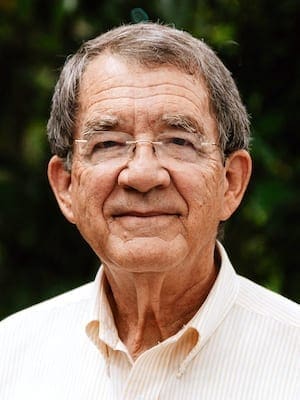The beginning of the traditional school year brings a wide range of dynamics to the rhythm of life in our society.
For some, it is a significant threshold to a new stage of family life, where preschool childhood begins to move out to new discoveries and new horizons from which, in a way, there will be no return.
For others, it is the annual restart of a process that will consume a number of years as dependence and other guidance give way to independence and responsibility.
For still others, it is the annual renewal of a professional calling.
“Schooling” – as the formal framework for our most systematic efforts at the process of education – is woven deeply into the fabric of our lives; and it is hard to escape its impact, as the rituals of back-to-school shopping and increased traffic seem to affect the wider community.
From having listened over the years to conversational commentaries on the challenges that schools face and some of the reasons for those challenges, one opinion in particular has been repetitive and difficult to respond to with much effectiveness.
“Schools started going downhill when they (in other words, the Supreme Court) took God, prayer and the Bible out of the schools” is the general version of the opinion, and it either gets nods of agreement or eye rolls, depending on the context.
The genuinely concerned and mostly well-meaning people who make this observation communicate two things to me:
1. They don’t understand adequately the meaning and purpose of the First Amendment.
2. They don’t know the same public school teachers that I know.
The need behind the first observation has been broadly discussed on many fronts, and I am somewhat encouraged that there seems to be an increasing understanding of its importance as a protection of religious liberty rather than an obstacle to it.
The second observation moves to a different level of thinking about the place of religious faith in our public life, and I was helped in my thinking about that by a comment made in an interview reported in the current issue of the Nurturing Faith journal with pastor, teacher and scholar Guy Sayles.
He was reflecting on the impact of the “Jesus story” on some of his earlier images of what it meant to be a man and a person of faith. He said, “It wasn’t a matter of ‘imitating’ Jesus, but ‘incarnating’ his character and commitments.”
The tradition of “imitating Jesus” has explicit roots in the classic work of Thomas à Kempis in the early 15th century. His “The Imitation of Christ” has been a devotional classic since then.
At the turn of the 19th to the 20th century, Charles Sheldon popularized the theme with his “In His Steps,” a story built around the ethical question, “What would Jesus do?”
Contemporary fashion featuring “WWJD?” bracelets, T-shirts and other media continues the emphasis that the wholesome and faithful life is one “De Imitatione Christi,” to use Thomas’ title.
Imitation may be one of the highest forms of honor and affirmation, and there is no argument if more of us did as Jesus would do, we would all be better off.
Yet, there is something intriguing to me about Sayles’ distinction, and something that may get closer to the heart of what the covenant faith calls us to than “mere” imitation.
Mining the distinction a bit, “incarnatione Christi” would suggest that the reality of Christ becomes so much a part of who we are that there is no part of us that is not reflective of what he discloses as the character of God.
Paul’s affirmation, “I have been crucified with Christ, and it is no longer I who live, but it is Christ who lives in me” (Galatians 2:19-20) points to this way of thinking.
I am privileged to know enough teachers who “incarnate” Christ (a number of whom do not wear the label “Christian”) that I cannot embrace the observation that God, prayer and a biblical perspective are not fully at work in classrooms across the U.S.
A story written 40 years ago by Elizabeth Unger, based on a compendium of events and experiences, told and retold by many, including Tony Campolo, from whom I first heard it, can be seen here.
The story is a powerful vehicle for the idea that a simple classroom can be one of the places where the Kingdom of God is a reality.
The good news of incarnation is that the Word became flesh, the continued good news is that it still does.
Prayers and good wishes to the host of folks who resume in this season the pilgrimage of teaching.
Colin Harris is professor emeritus of religious studies at Mercer University and a member of Smoke Rise Baptist Church in Stone Mountain, Georgia.
Editor’s note: This article is part of a series focused on local schools and the faith community. The previous article in the series is:
4 Ways Your Church Can Minister to Schools
Professor emeritus of religious studies at Mercer University, a member of Smoke Rise Baptist Church in Stone Mountain, Georgia, and the author of Keys for Everyday Theologians (Nurturing Faith Books, 2022).

